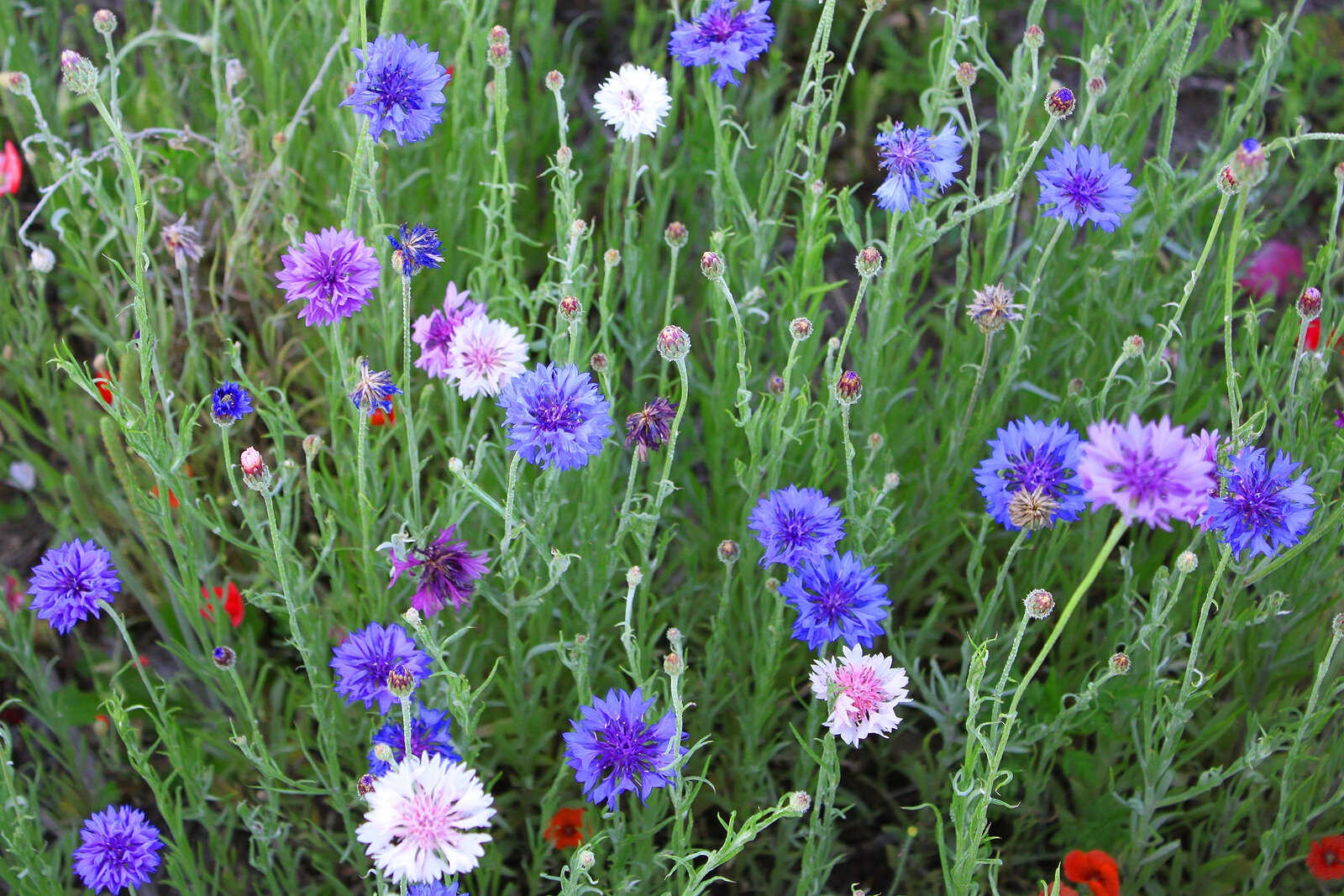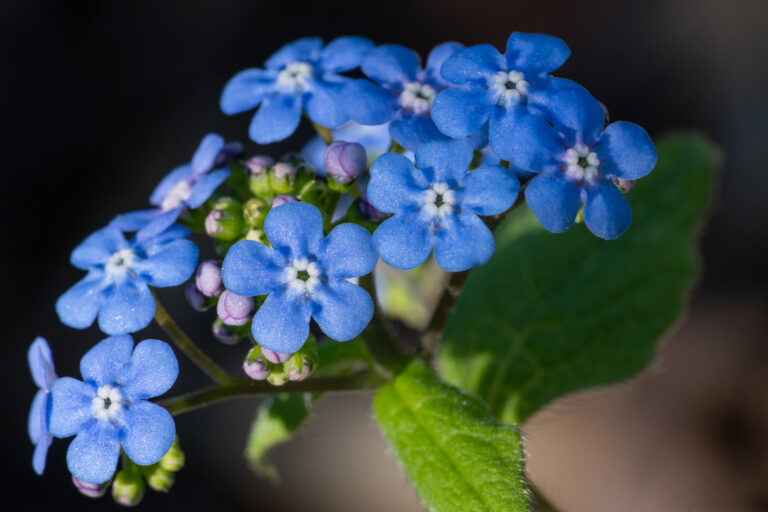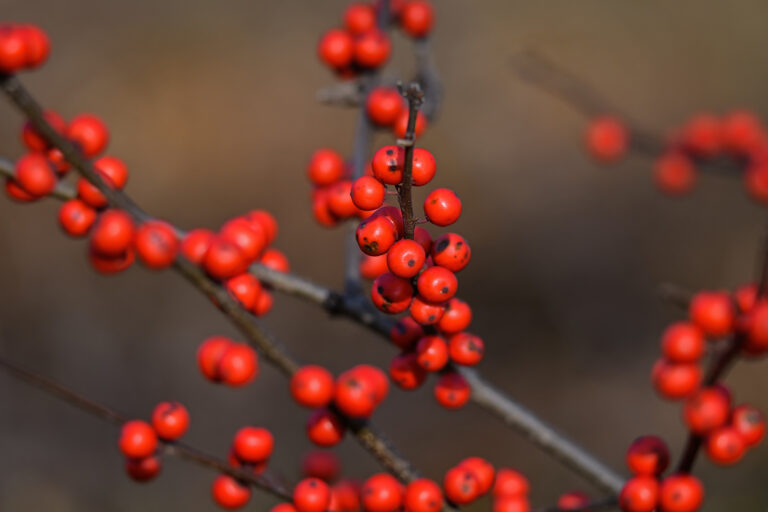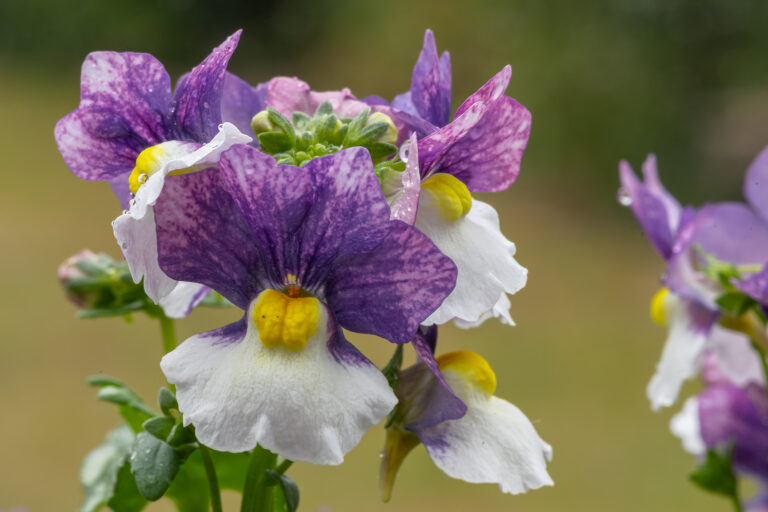16 Drought-Tolerant Annuals
There are many flowering annuals that don’t need much moisture to look great. They have adapted to environments with hot sunny conditions or prolonged dry spells. If drought or water restrictions are common where you live, choose plants that can get along without ample water.
Grow drought-tolerant plants to make your garden less water-dependent. They may need moisture to get started, but once their roots are established, they will get along just fine with deep, infrequent watering.
One tip for the dry garden: a 2-inch layer of compost or other organic mulch slows evaporation and also helps moderate soil temperature.
Here’s our list of drought-tolerant plants that thrive in hot, dry conditions. Click on the botanical name of each plant–noted in red–to get detailed how-to-grow tips.
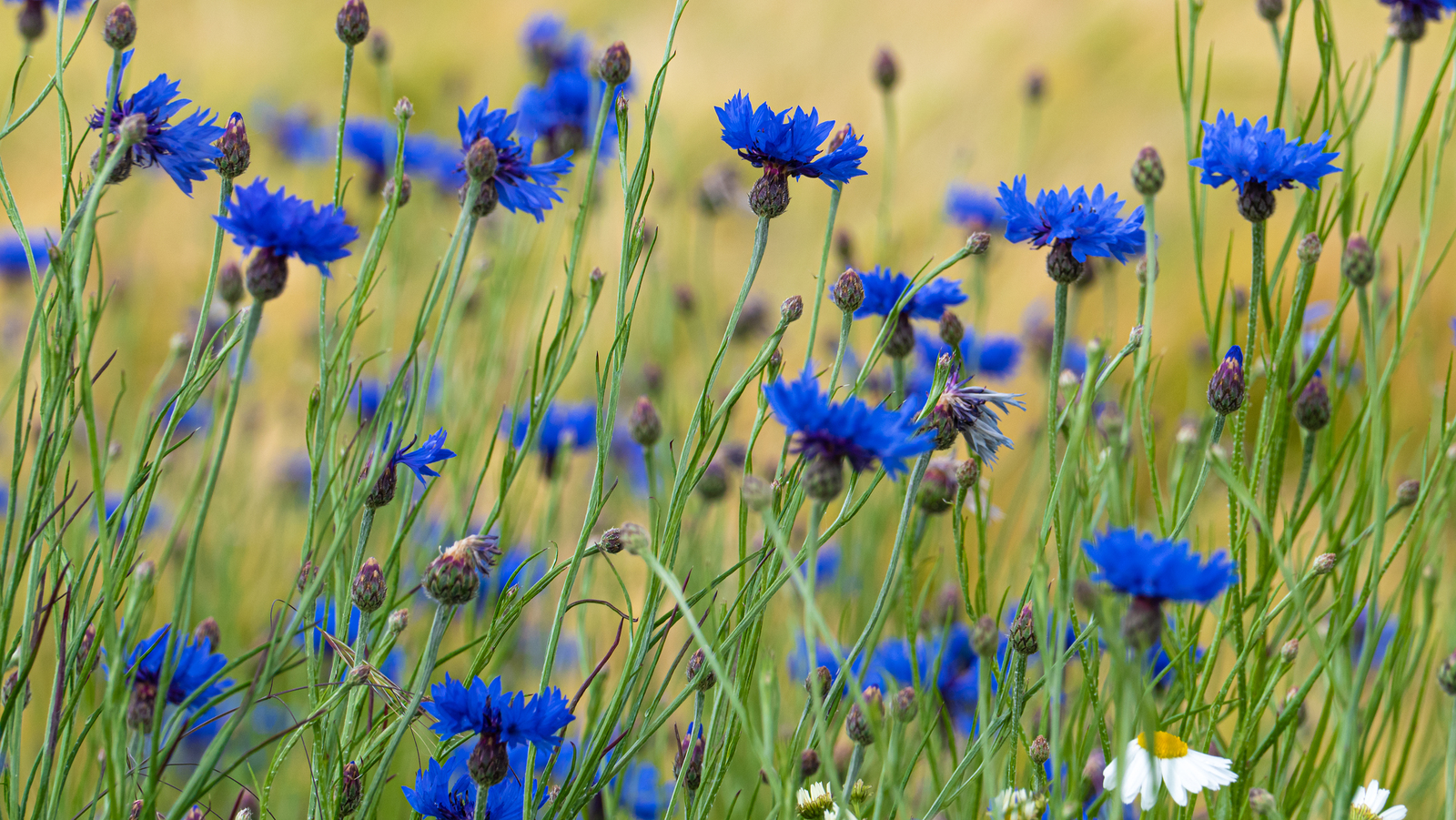 Centaurea cyanus (bachelor’s button, cornflower). Tall or dwarf varieties with 2-inch flowers and small gray-green leaves. Grows 12 to 36 inches (30-91cm) tall and 12 inches wide. Sow seeds early where plants are to grow; they resent transplanting. Grow in full sun and in light, neutral soil. Blooms best in cool weather. Often self-sows. Good cut flower.
Centaurea cyanus (bachelor’s button, cornflower). Tall or dwarf varieties with 2-inch flowers and small gray-green leaves. Grows 12 to 36 inches (30-91cm) tall and 12 inches wide. Sow seeds early where plants are to grow; they resent transplanting. Grow in full sun and in light, neutral soil. Blooms best in cool weather. Often self-sows. Good cut flower.
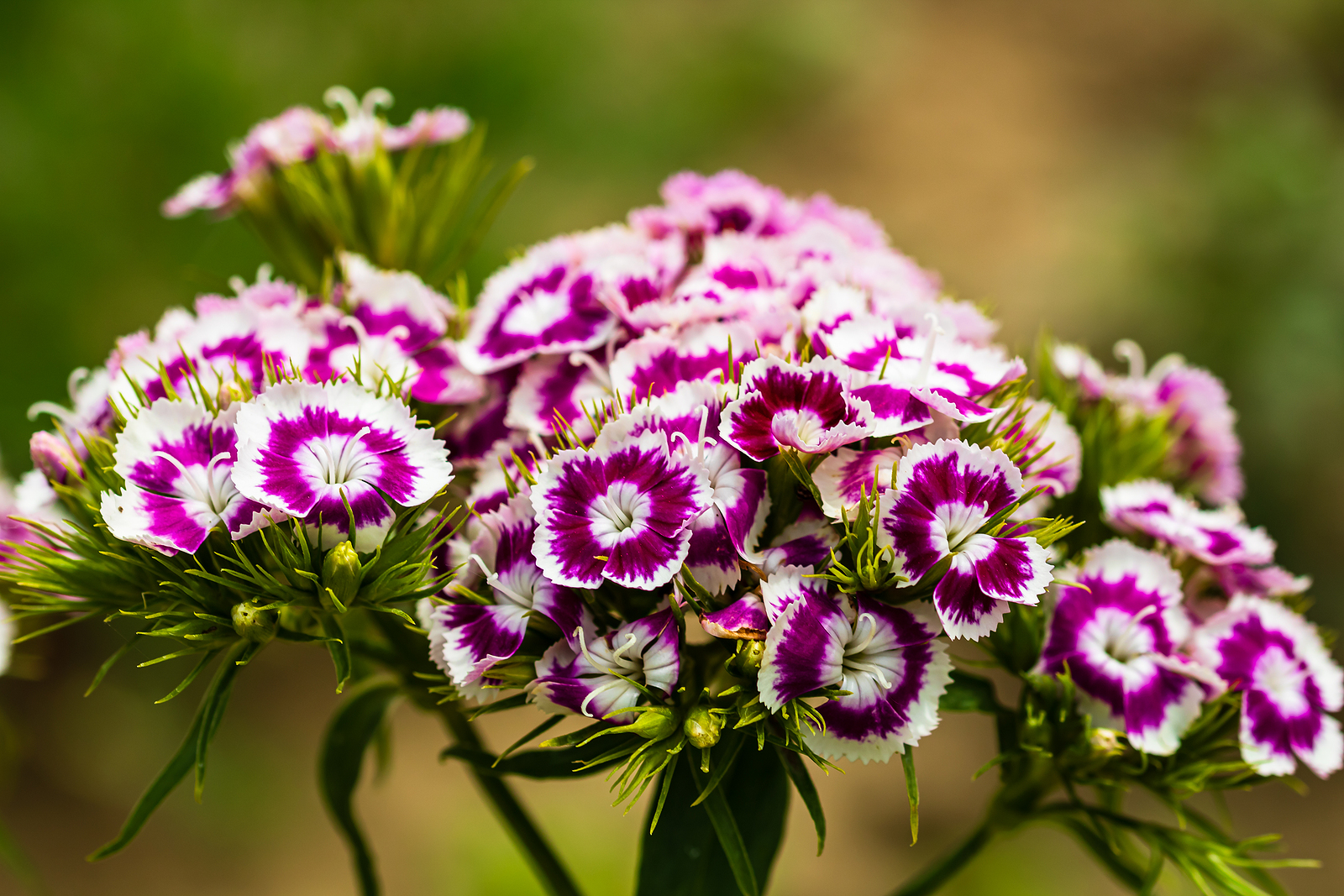 Dianthus chinensis (China pink). Scented, single to double flowers borne in profusion on stiff stems above the foliage. It grows 7 to 12 inches (17-30cm) tall and just as wide. Sow seed outdoors as soon as the soil can be worked in spring or start indoors 8 weeks before setting out. Grow in full sun and well-drained soil. Keep faded blooms picked to encourage new blooms.
Dianthus chinensis (China pink). Scented, single to double flowers borne in profusion on stiff stems above the foliage. It grows 7 to 12 inches (17-30cm) tall and just as wide. Sow seed outdoors as soon as the soil can be worked in spring or start indoors 8 weeks before setting out. Grow in full sun and well-drained soil. Keep faded blooms picked to encourage new blooms.
 Eschscholzia californica (California poppy). Saucer-shaped flowers on low-spreading plants with finely cut leaves. Flowers close at night and reopen the next day. Grows to 12 inches (30cm) tall and about half as wide. Sow seeds in early spring where plants are to grow. Sow seeds in autumn in warm-winter regions. Grows well find dry areas. When the weather is hot, the foliage will yellow. Commonly self-sows.
Eschscholzia californica (California poppy). Saucer-shaped flowers on low-spreading plants with finely cut leaves. Flowers close at night and reopen the next day. Grows to 12 inches (30cm) tall and about half as wide. Sow seeds in early spring where plants are to grow. Sow seeds in autumn in warm-winter regions. Grows well find dry areas. When the weather is hot, the foliage will yellow. Commonly self-sows.
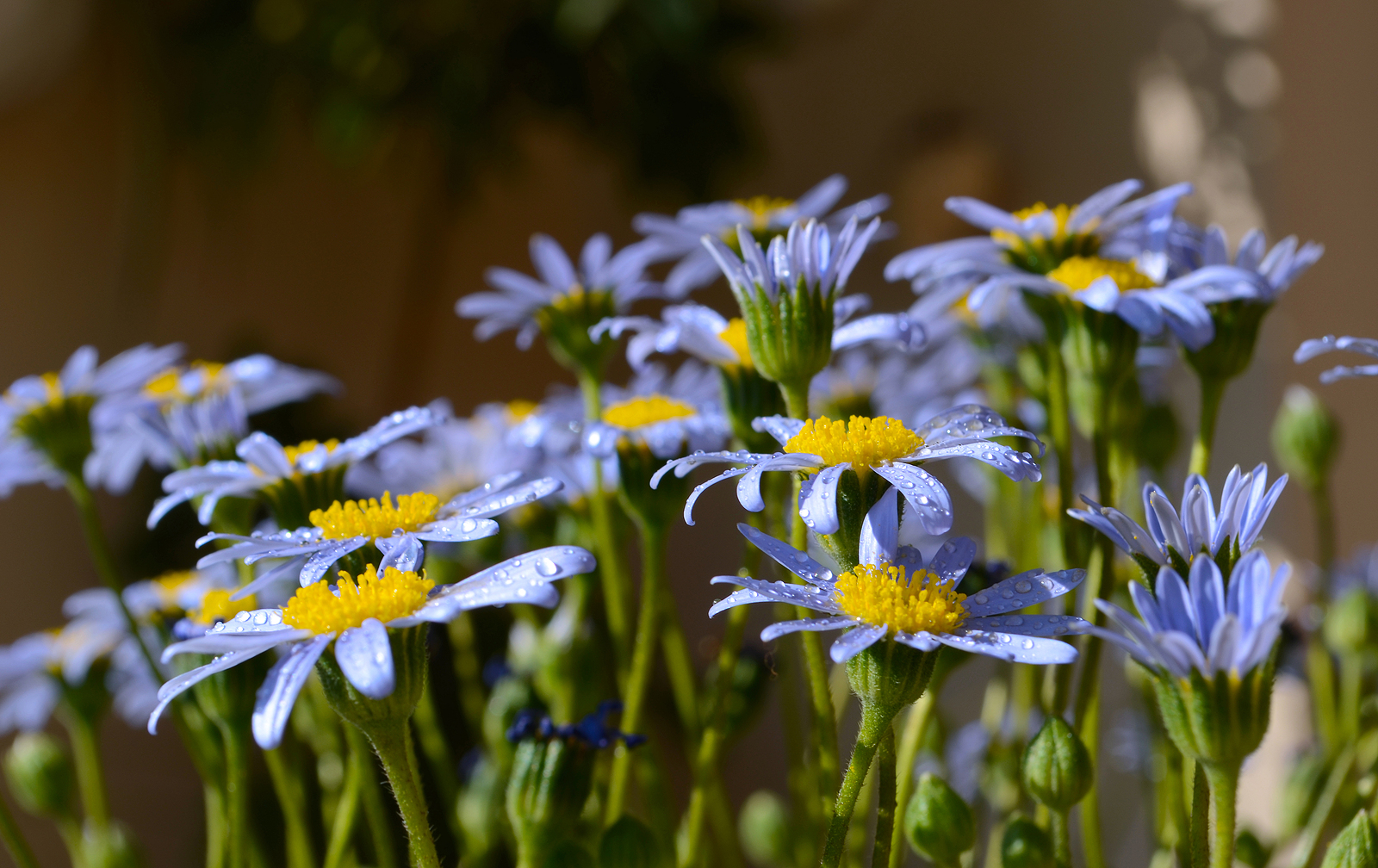 Felicia amellodies (blue daisy, blue marguerite). Perennial commonly grown as an annual. Blue daisylike flowers have yellow centers. Small oval leaves below flower years. Grows 8 to 18 inches (20-45cm) tall. Grow in full sun or partial shade in humus-rich, well-drained soil. Prune the plant at the end of the season to grow as an annual.
Felicia amellodies (blue daisy, blue marguerite). Perennial commonly grown as an annual. Blue daisylike flowers have yellow centers. Small oval leaves below flower years. Grows 8 to 18 inches (20-45cm) tall. Grow in full sun or partial shade in humus-rich, well-drained soil. Prune the plant at the end of the season to grow as an annual.
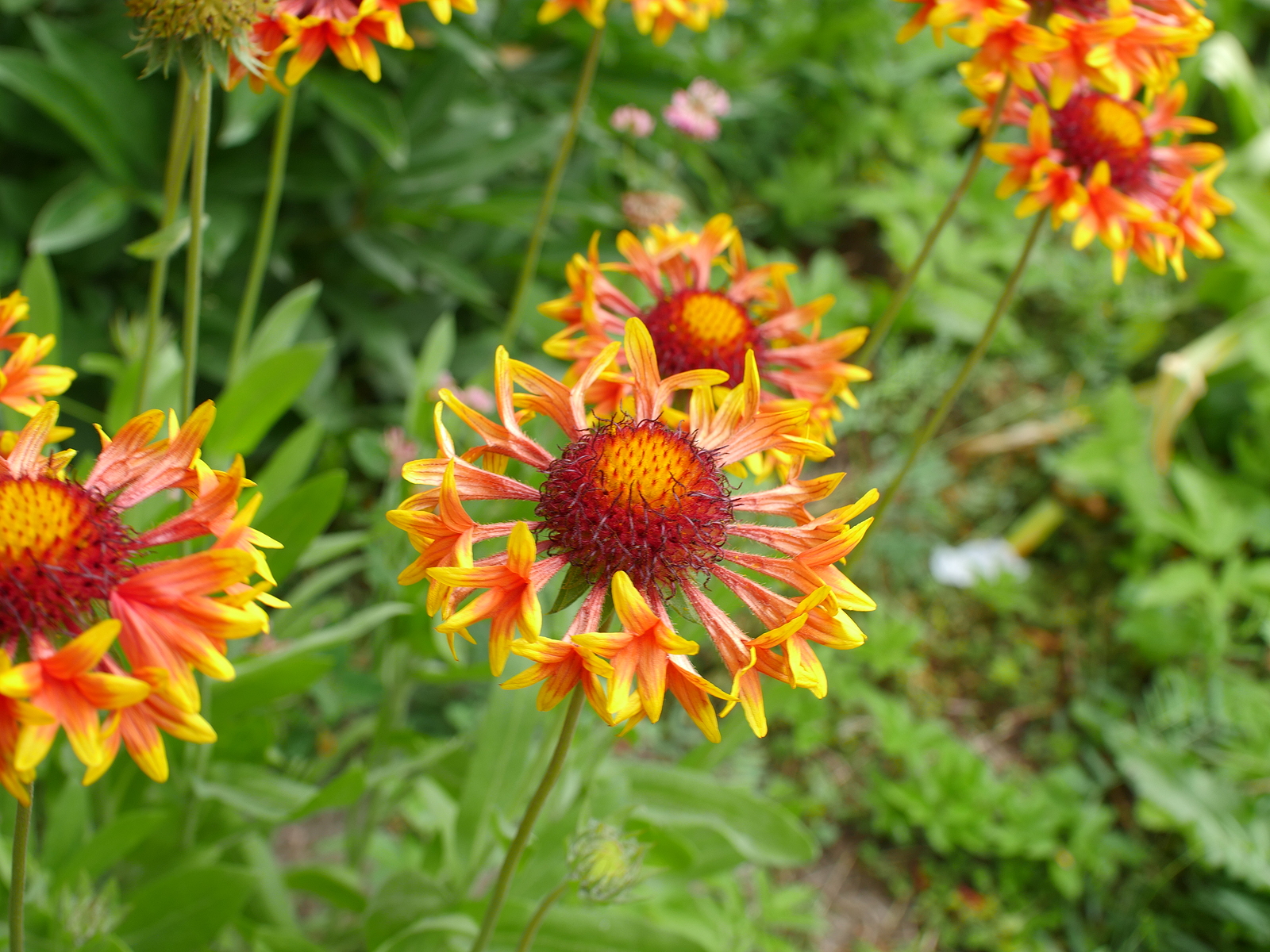 Gaillardia pulchella (annual blanket flower). Single or double daisylike flowers often with contrasting colors on tips of the petals. There are tall and short varieties. Grows 12 to 24 inches (30-61cm) tall and wide. Start seed indoors or outdoors. Thrives in heat and sun and almost any soil. Remove faded flowers to encourage new blooms. Self-sows.
Gaillardia pulchella (annual blanket flower). Single or double daisylike flowers often with contrasting colors on tips of the petals. There are tall and short varieties. Grows 12 to 24 inches (30-61cm) tall and wide. Start seed indoors or outdoors. Thrives in heat and sun and almost any soil. Remove faded flowers to encourage new blooms. Self-sows.
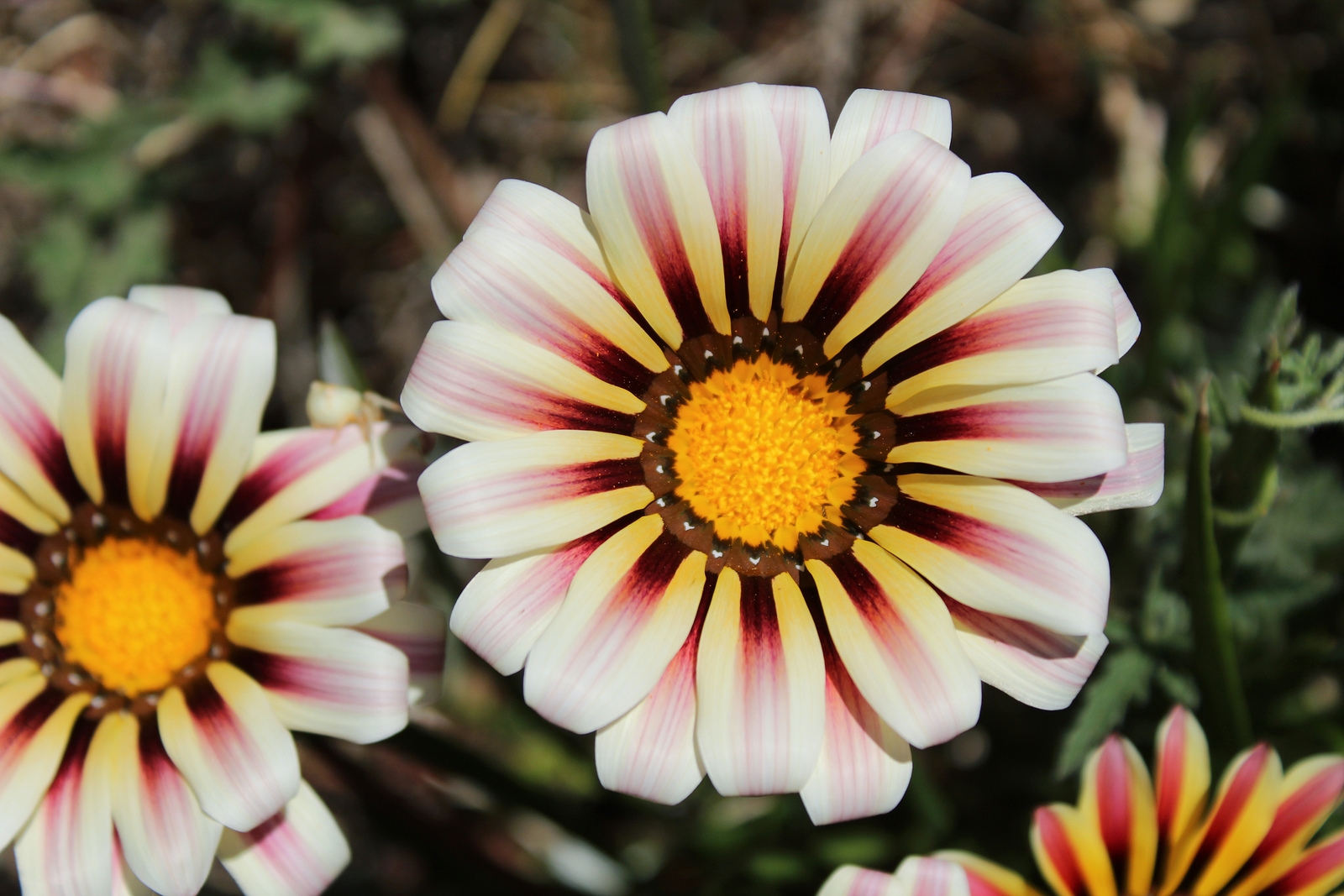 Gazania rigens (gazania). Daisylike flowers with striking markings on petals in contrasting colors. Gazania flowers all summer. Flowers close during cloudy weather and at night. Plants grow 6 to 15 inches tall (15-38cm) and 12 inches wide. Plant in full sun, in light, sandy soil. Sow seeds in spring; cuttings can be rooted.
Gazania rigens (gazania). Daisylike flowers with striking markings on petals in contrasting colors. Gazania flowers all summer. Flowers close during cloudy weather and at night. Plants grow 6 to 15 inches tall (15-38cm) and 12 inches wide. Plant in full sun, in light, sandy soil. Sow seeds in spring; cuttings can be rooted.
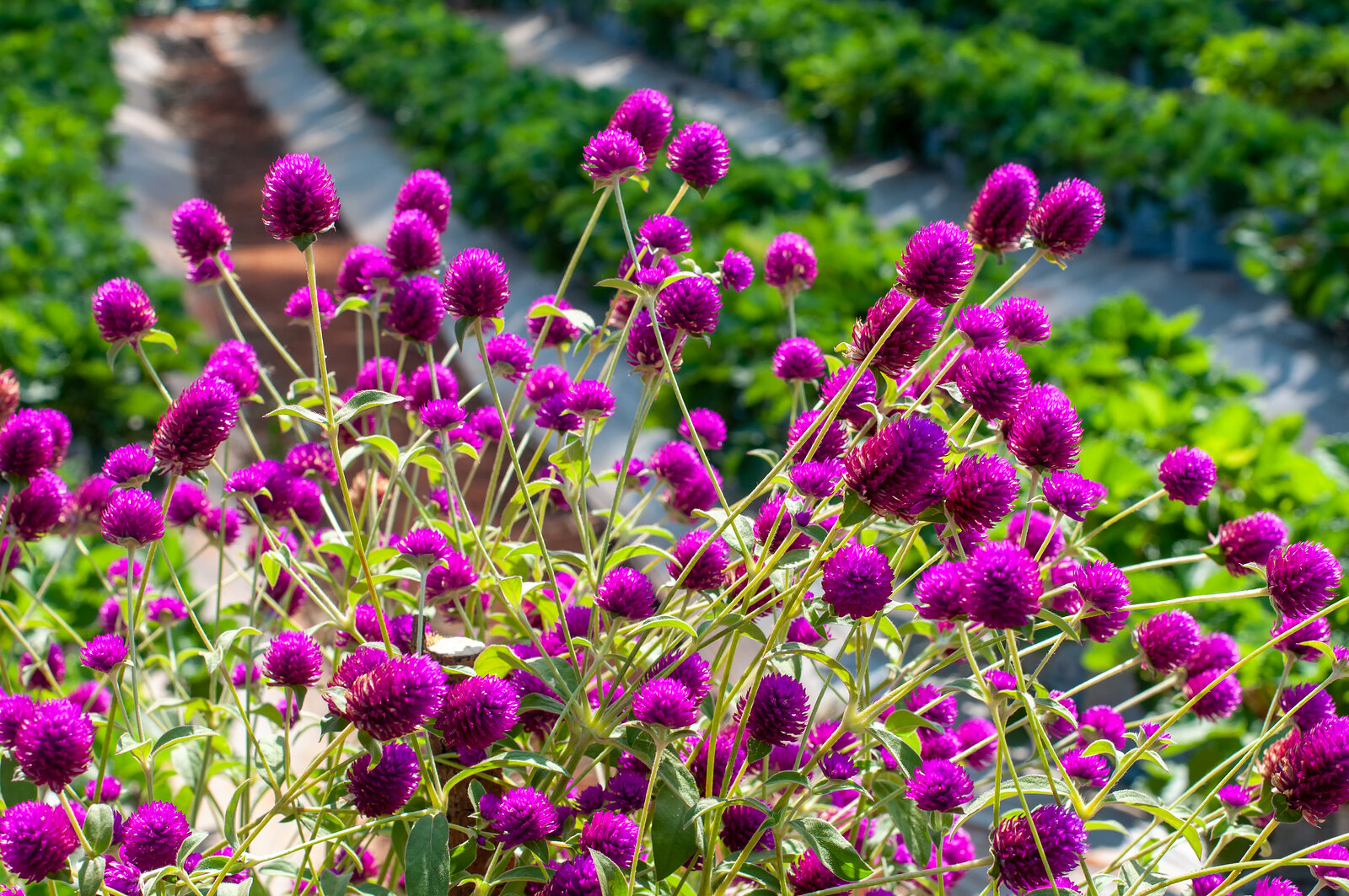 Gomphrena globosa (globe amaranth). Small, round, papery flower heads on tall or dwarf plants. Grows 9 to 18 inches (22-45cm) tall. Sow seeds indoors early or outdoors after the soil has warmed. Thrives where summers are hot. Long-lasting cut flower that dries well. To dry, pick flowers when open then hand them upside down in a dry place.
Gomphrena globosa (globe amaranth). Small, round, papery flower heads on tall or dwarf plants. Grows 9 to 18 inches (22-45cm) tall. Sow seeds indoors early or outdoors after the soil has warmed. Thrives where summers are hot. Long-lasting cut flower that dries well. To dry, pick flowers when open then hand them upside down in a dry place.
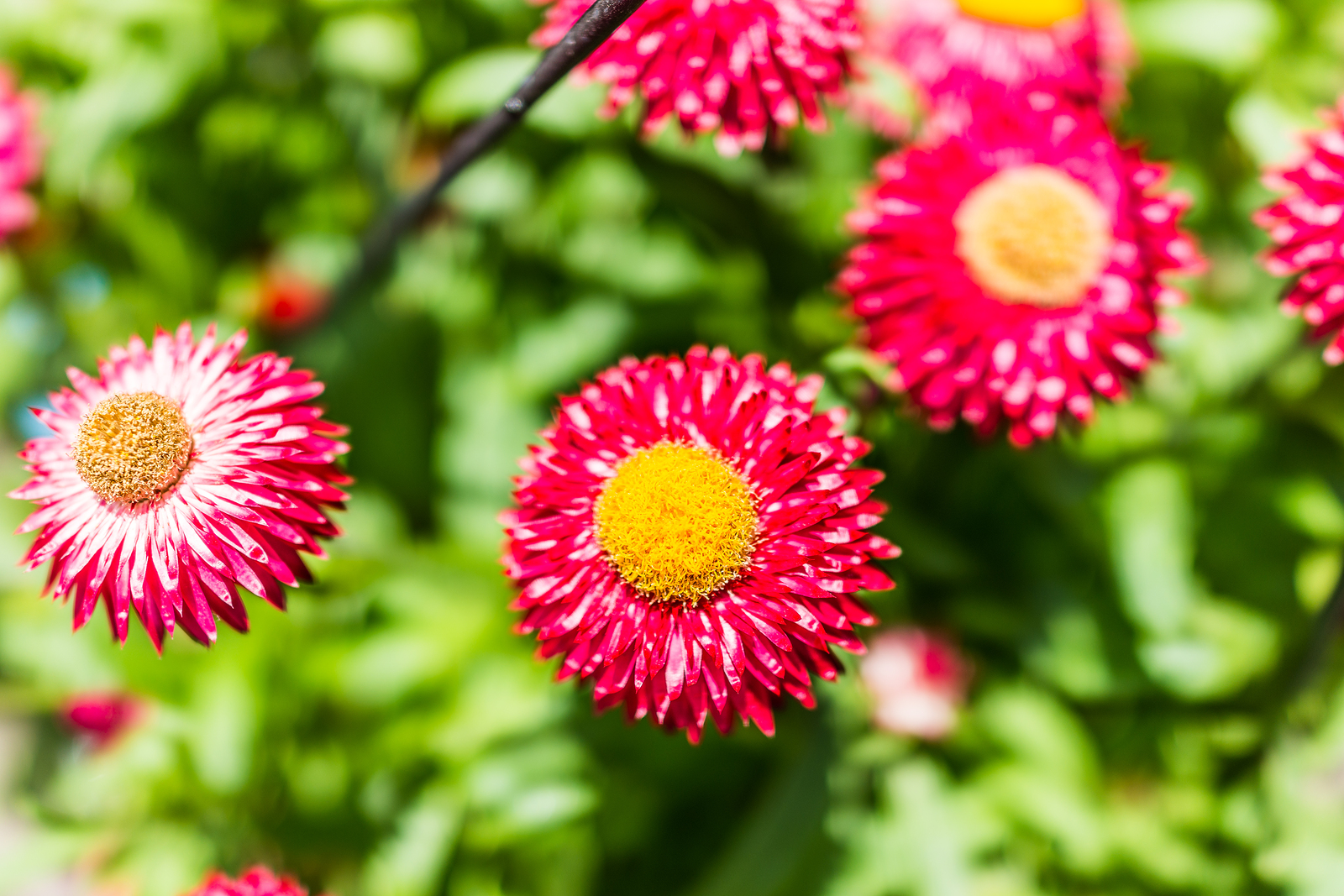 Helichrysum bracteatum (strawflower). Papery flowers come in yellow, oranges, pinks, reds, white, bronzes, and purples. Blooms mid through late summer. Grows 1 to 4 feet (1.2m) tall. Sow seed in spring after all danger of frost has passed. Plant in full sun in average to sandy, well-drained, alkaline soil. Outstanding dried flower; good cut flower. Easy to grow.
Helichrysum bracteatum (strawflower). Papery flowers come in yellow, oranges, pinks, reds, white, bronzes, and purples. Blooms mid through late summer. Grows 1 to 4 feet (1.2m) tall. Sow seed in spring after all danger of frost has passed. Plant in full sun in average to sandy, well-drained, alkaline soil. Outstanding dried flower; good cut flower. Easy to grow.
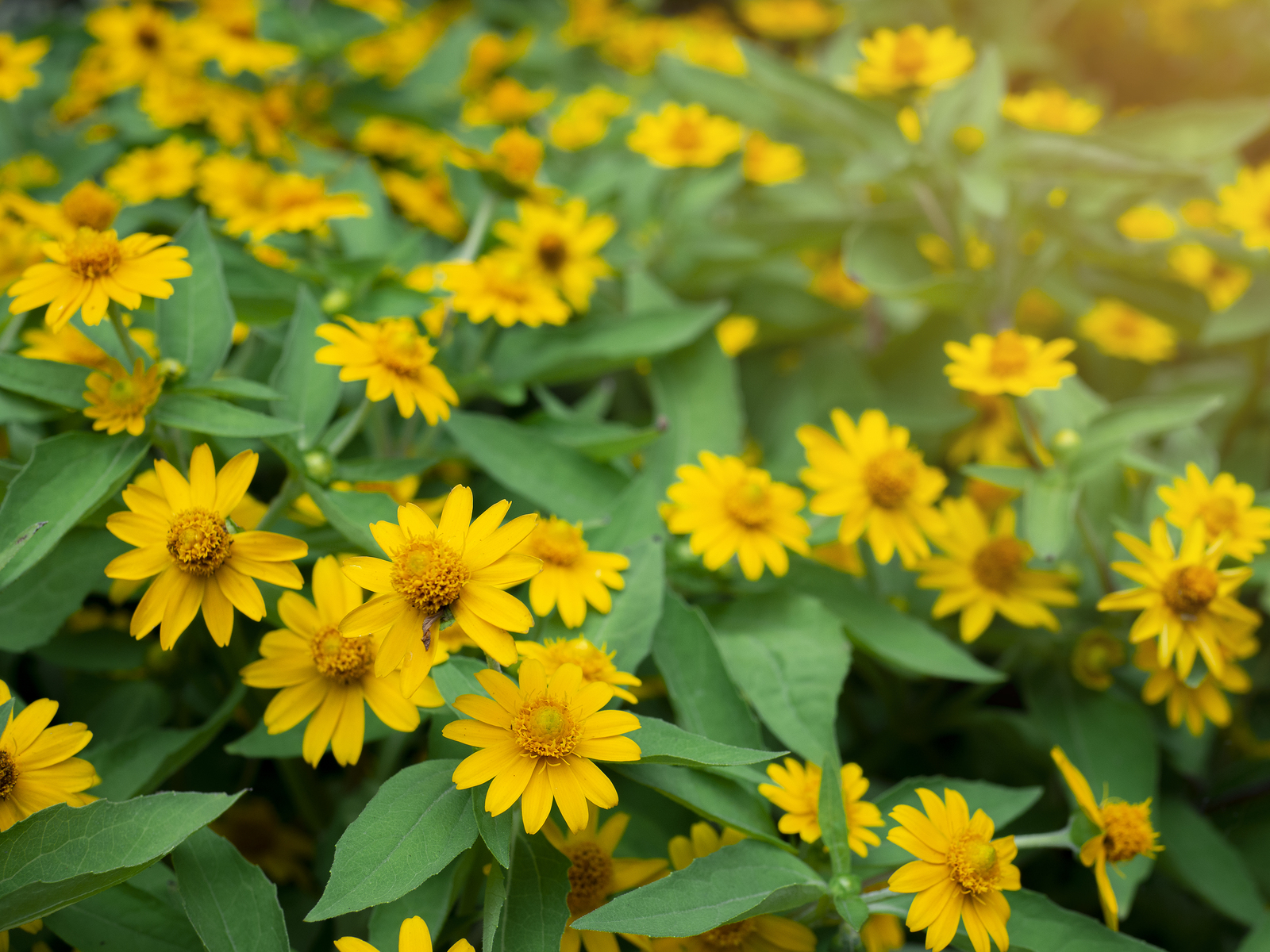 Melampodium paludosum (butter daisy). Profuse yellow daisylike flowers. Blooms from early summer to frost. Grows 10 to 14 inches (25-35cm) tall and wide. Plant in full sun but will tolerate light shade. Grow in average to poor soil. Fertilizing will reduce blooms. There is no need to deadhead.
Melampodium paludosum (butter daisy). Profuse yellow daisylike flowers. Blooms from early summer to frost. Grows 10 to 14 inches (25-35cm) tall and wide. Plant in full sun but will tolerate light shade. Grow in average to poor soil. Fertilizing will reduce blooms. There is no need to deadhead.
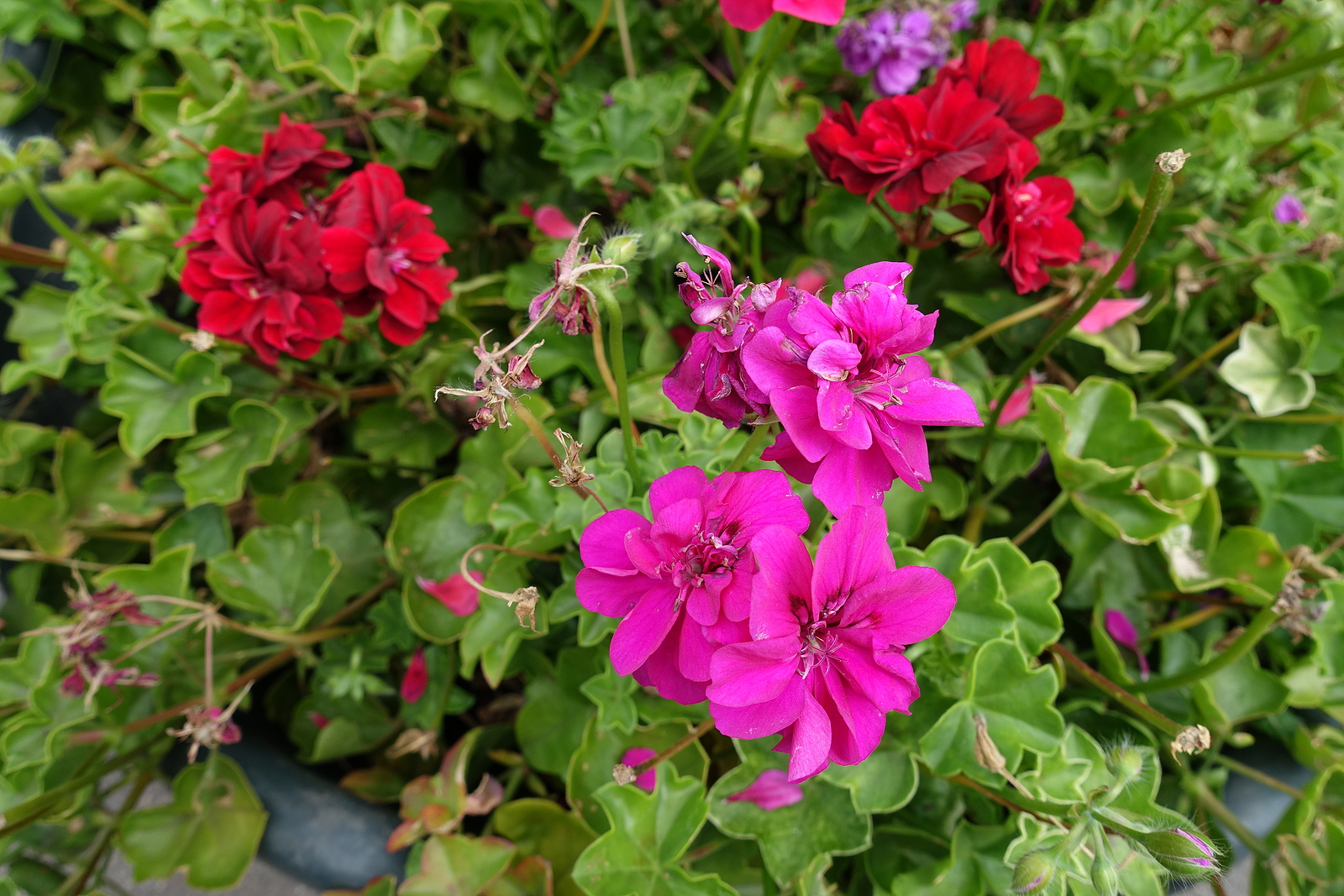 Pelargonium peltatum (ivy geranium). Trailing plant with bright green deeply lobed leaves and clusters of vivid flowers that can be single or double–white, lavender, pink, rose, or red. Grows 12 to 24 inches (30-61cm) tall and 24 inches wide. Plant in full sun or light shade in humus-rich, well-drained soil. They have a long flowering period. Early pinching will promote branching.
Pelargonium peltatum (ivy geranium). Trailing plant with bright green deeply lobed leaves and clusters of vivid flowers that can be single or double–white, lavender, pink, rose, or red. Grows 12 to 24 inches (30-61cm) tall and 24 inches wide. Plant in full sun or light shade in humus-rich, well-drained soil. They have a long flowering period. Early pinching will promote branching.
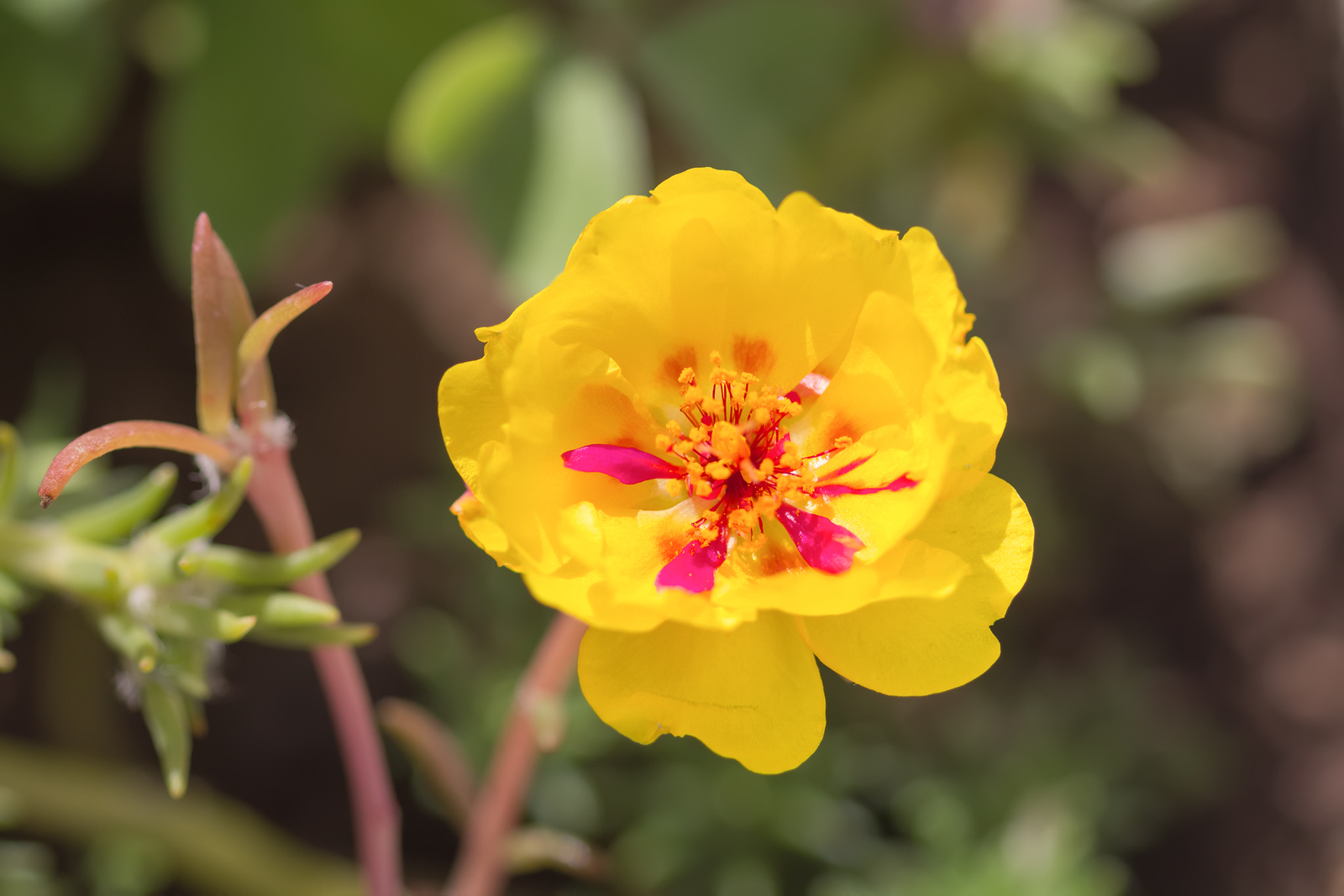 Portulaca grandiflora (moss rose). Ground-hugging plant with succulent, narrow leaves and single to double flowers to 2.5 inches across. Profuse blooms remain open when the sun shines. Sow seeds outdoors where plants are to grow. Grows best in sunny, dry places, and not overly rich soil. Blooms quickly; often self-sows.
Portulaca grandiflora (moss rose). Ground-hugging plant with succulent, narrow leaves and single to double flowers to 2.5 inches across. Profuse blooms remain open when the sun shines. Sow seeds outdoors where plants are to grow. Grows best in sunny, dry places, and not overly rich soil. Blooms quickly; often self-sows.
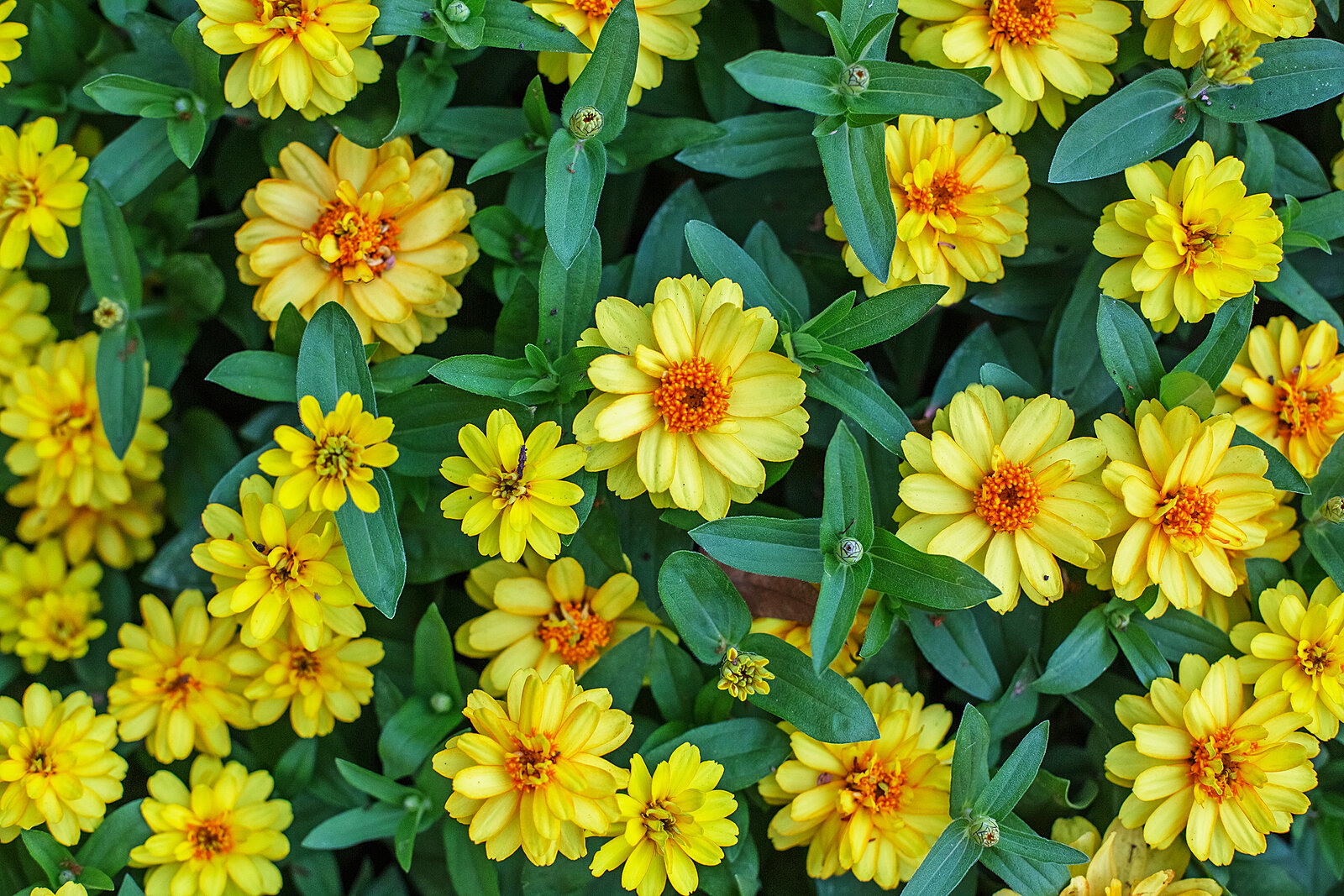 Sanvitalia procumbens (creeping zinnia). Cheerful miniature zinnia flowers in orange, gold, or lemon yellow. Ground-hugging plants bloom all summer. Grows 4 to 8 inches (10-20cm) tall and trails to 12 inches wide. Sow in the garden after the last frost. Plant in full sun or part shade in average, well-drained soil with moderate moisture.
Sanvitalia procumbens (creeping zinnia). Cheerful miniature zinnia flowers in orange, gold, or lemon yellow. Ground-hugging plants bloom all summer. Grows 4 to 8 inches (10-20cm) tall and trails to 12 inches wide. Sow in the garden after the last frost. Plant in full sun or part shade in average, well-drained soil with moderate moisture.
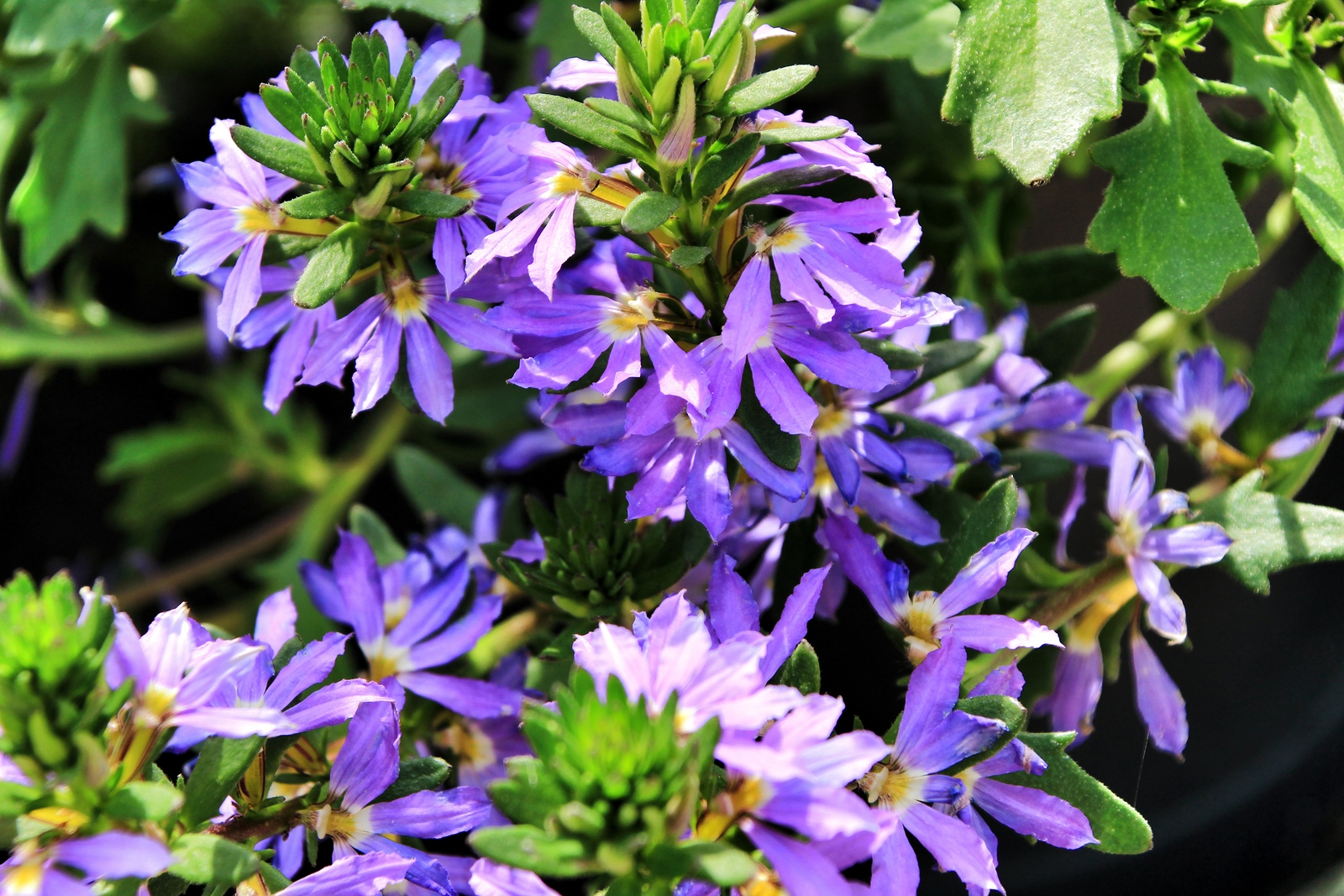 Scaevola aemula (fanflower). Lovely flowers are blue or pink. Can be grown as a perennial in warm-winter regions. Grows 6 to 8 inches (15-20cm) tall. Plant in full sun or light shade in humus-rich to average soil that is moist but well-drained. Start seeds in early spring. excellent for containers and baskets.
Scaevola aemula (fanflower). Lovely flowers are blue or pink. Can be grown as a perennial in warm-winter regions. Grows 6 to 8 inches (15-20cm) tall. Plant in full sun or light shade in humus-rich to average soil that is moist but well-drained. Start seeds in early spring. excellent for containers and baskets.
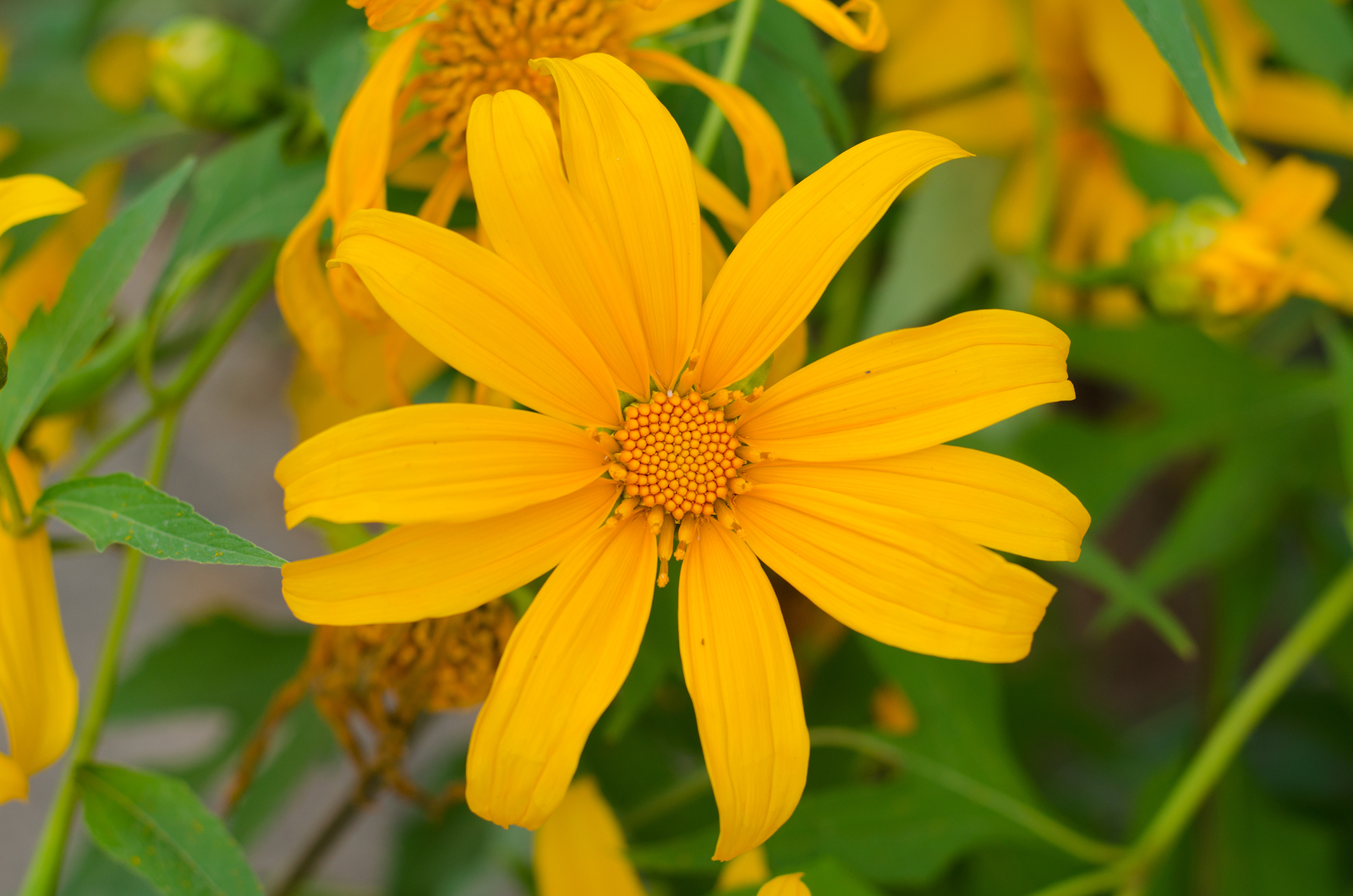 Tithonia rotundiflora (Mexican sunflower). Large daisylike flowers up to 3 inches across resemble zinnias. Flowers in summer. Grows 4 to 5 feet (1.2-1.5m) tall and 2 feet wide. Plants take 3 to 4 months to flower from seeds so they are best started indoors in late winter or early spring. Grow in full sun in average soil.
Tithonia rotundiflora (Mexican sunflower). Large daisylike flowers up to 3 inches across resemble zinnias. Flowers in summer. Grows 4 to 5 feet (1.2-1.5m) tall and 2 feet wide. Plants take 3 to 4 months to flower from seeds so they are best started indoors in late winter or early spring. Grow in full sun in average soil.
 Tropaeolum majus (nasturtium). Plants can be low and compact, climbing, or trailing with single or double flowers. Grows 8 to 24 inches (20-61cm) tall or more and about as wide. Sow outdoors after the weather warms in spring, preferably where plants are to grow. Plant in full sun and not too rich or too moist soil. Climbing types can be used on fences or in hanging baskets.
Tropaeolum majus (nasturtium). Plants can be low and compact, climbing, or trailing with single or double flowers. Grows 8 to 24 inches (20-61cm) tall or more and about as wide. Sow outdoors after the weather warms in spring, preferably where plants are to grow. Plant in full sun and not too rich or too moist soil. Climbing types can be used on fences or in hanging baskets.
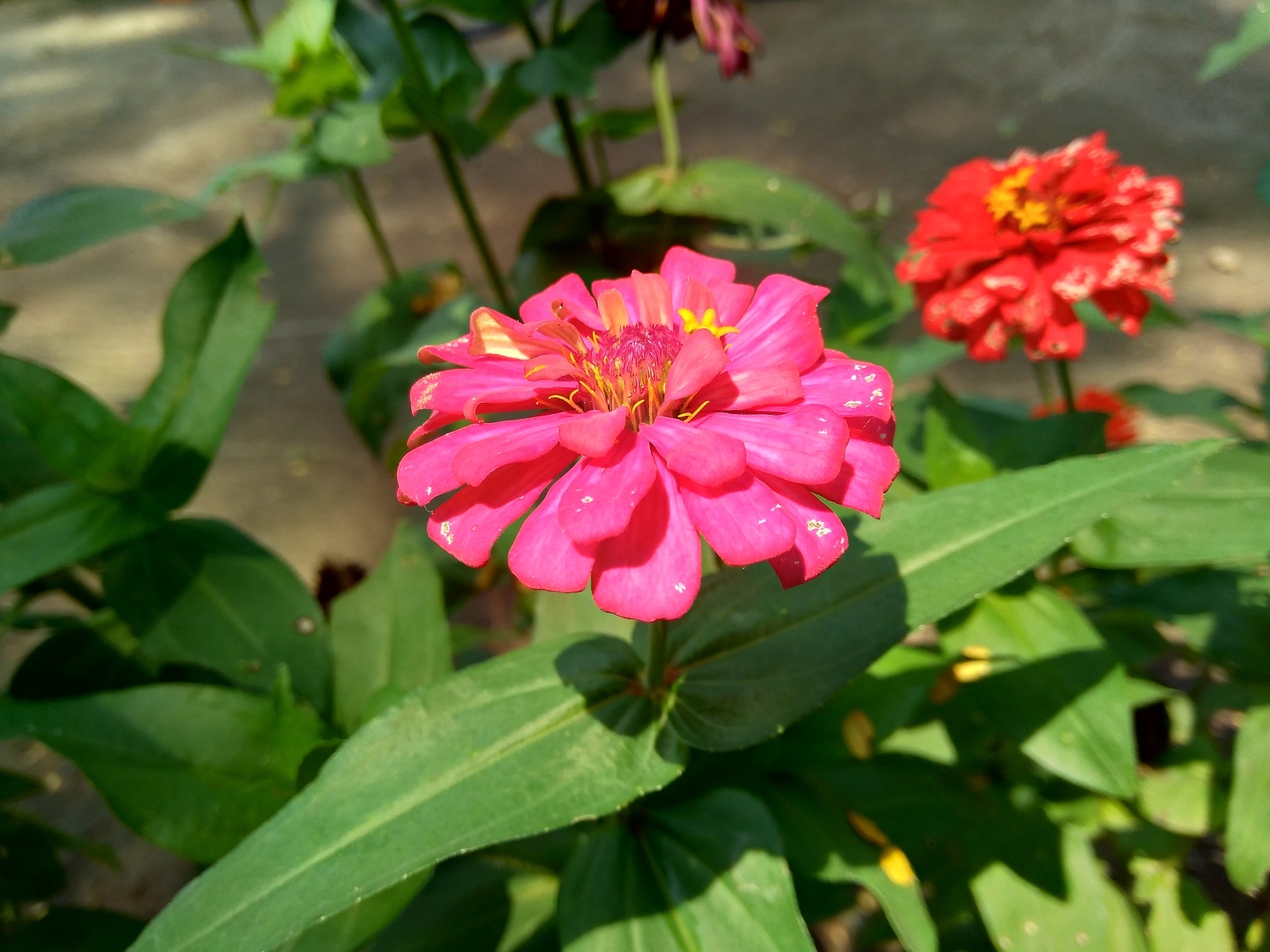 Zinnia angustifolia (zinnia). Single or double daisylike flowers with petals often quilled, sometimes bicolored. Wide range of plants sizes. A reliable, easy to grow, long-blooming plant. Grows 6 to 18 inches (15-45cm) tall. Sow seeds 6 weeks in advance of setting seedlings in the garn or sow outdoors after the last spring frost. Grows best in full sun and humus-rich soil. Keep faded blooms picked for further flowering.
Zinnia angustifolia (zinnia). Single or double daisylike flowers with petals often quilled, sometimes bicolored. Wide range of plants sizes. A reliable, easy to grow, long-blooming plant. Grows 6 to 18 inches (15-45cm) tall. Sow seeds 6 weeks in advance of setting seedlings in the garn or sow outdoors after the last spring frost. Grows best in full sun and humus-rich soil. Keep faded blooms picked for further flowering.

